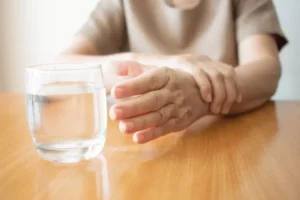
He and the other panelists called for resources to be directed at fighting both problems. The stark contrast, Warren said, “reveals an uncomfortable truth. Race plays a significant role in determining whether America responds to drug crises with punishment or care.” “I never really thought I could do anything, but now I know I can do anything,” said Mr Emery, who has detoxed, learned life skills and reconnected with his family. Influenced by paradigms of natural science and, more specifically, pharmacological research discourse, significant effort has been devoted to identifying the best treatment methods, based on the best evidence. The following critical discussion is informed by this general framework and based on related empirical evidence and findings. Within a few years, Katie found herself right back to where she had been as a young 22-year-old—this time with three DUIs and a yearlong jail sentence hanging over her head.
- Residential care removes people from problematic environments, maladaptive lifestyles, and the inducements to drug use they hold.
- Sophia’s substance abuse quickly spiraled out of control, jeopardizing her job and alienating her support system.
- An intervention can motivate someone to seek help for alcohol or drug misuse, compulsive eating, or other addictive behaviors.
- She also found support in online recovery communities, which provided a judgment-free space to share her struggles and triumphs.
- Treatment programs usually have multiple elements addressing the many facets of overcoming addiction, healing the damage to body and mind, rebuilding a life, and finding direction for the future.
After Rehab, What Does Recovery Look Like?
Each narrative of triumph over addiction chips away at the feelings of hopelessness and isolation that often accompany substance abuse. Today, Maria works as a recovery coach and speaks at schools about the dangers of drug abuse. Her story is a powerful testament to the possibility of not just achieving sobriety, but thriving in long-term recovery.

How Do You Identify an Effective Treatment Facility?
From this macro-societal policy level we will highlight next the dynamics of changes and functionality of the make-up of the treatment system and more specifically its outreach and acceptance by various client groups. Today, Alex has been sober for three years and manages his bipolar disorder successfully. He runs a support group for others dealing with co-occurring mental health and substance use disorders, offering hope and practical advice based on his own experiences.

Long-term Recovery Stories: Maintaining Sobriety and Personal Growth
Removing the drug does not instill understanding of the underlying causes of the addiction. Nor does it repair damage done, provide needed psychological and behavioral skills, or furnish a goal in life, successful drug addicts something necessary for creating feelings of reward that the substance formerly provided. Nor does it solve the problem that made use of a psychoactive substance so attractive in the first place.
- In addition, self-care is a vital foundation for a healthy new identity.
- For some people, committing to complete abstinence is not desirable or is too daunting a prospect before beginning treatment.
- The doctor gave me a prescription and referrals to see other specialists but I still kept drinking.
- It’s about rebuilding relationships, rediscovering passions, and finding purpose.
- He was constantly hungover, irritable, and emotionally distant from his family.
- Drug abuse and criminality – heroin use among unaccompanied refugee minors (URMs) in Sweden as an example (TT/The Local, 2017) – is often referred to in terms of coping with trauma and painful experiences (Ivert & Magnusson, 2019).
Shared beliefs about the nature of addiction not only influence either social support or stigma in the general population but also impact the relative importance of “cure, care, and control” in treatment systems. Most prominently, control measures and coercive interventions are first contingent upon basic convictions about the “nature of addicts”, and only then legitimised by evidence about the effects https://ecosoberhouse.com/ of coercive measures. Contrary to Asian countries such as Cambodia, China, Thailand, and Vietnam, the long-term trend in Europe is that compulsory care and civil commitments have been largely abandoned (Klingemann & Storbjörk, 2016, p. 269). Coerced treatment in addiction facilities most clearly highlights contradictions and raises ethical problems when following a loss of control concept.

Stephen King is one of the foremost writers in the world, and he used a huge cocktail of drugs to get there. While most people use one or perhaps two drugs, King used cocaine, Xanax, Valium, NyQuil, beer, tobacco, and marijuana to get him through the day. His family eventually staged an intervention, dumping all the evidence of his addiction in front of him. He would later say that he doesn’t even remember writing some of his books; he was that much off his face.

Rehab is not considered full treatment of addiction problems because it does not provide for gaining and practicing recovery skills under the pressures of everyday life. Good rehab programs provide linkage to aftercare programs in a person’s local community. Models of innovation diffusion, both at the international and national levels, provide insight into barriers and facilitating factors.
Paradigms and beliefs impeding evolution and adaptation of treatment systems
Although it may not be ideal or optimal, treating an opioid or methamphetamine use disorder even while a person continues to use cannabis or alcohol would be a net individual and public health benefit. Temporary returns to drug use are so common and expected during treatment and recovery that addiction is described as a chronic relapsing condition, like some autoimmune diseases. Yet these setbacks may still be regarded by family, friends, communities, and even physicians as failures, resetting the clock of recovery to zero.
The Diagnostic and Statistical Manual of Mental Disorders (DSM) avoids the terms addiction and recovery. Sustained remission is applied when, after 12 months or more, a substance is no longer used and no longer produces negative life consequences. Gaining the skills to avoid relapse is a necessary part of the recovery process. At least equally necessary is developing in a positive direction out of the addiction.

Leave a Comment